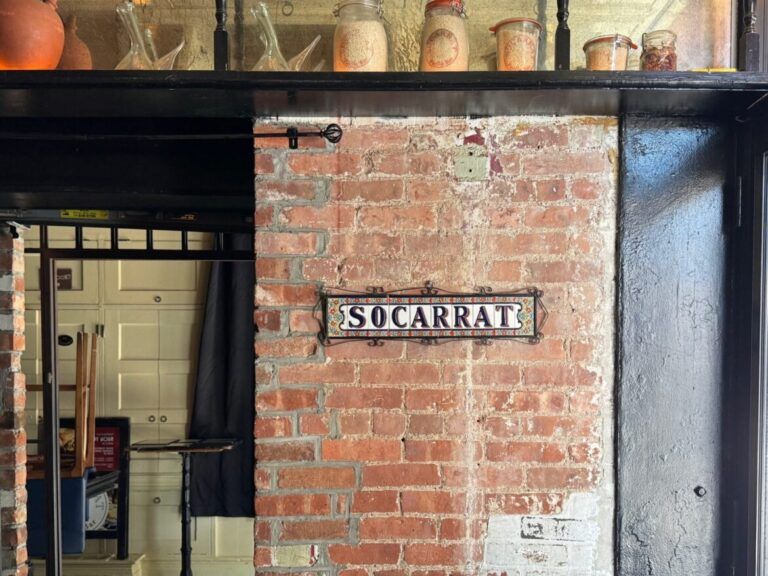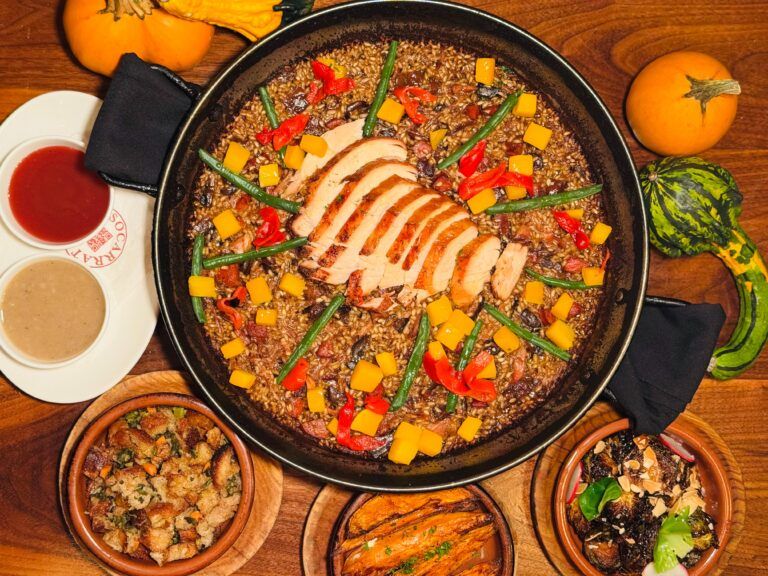There’s a quiet poetry that lives within every bottle of Spanish wine — a harmony of soil and sunlight, of hands that have tended vines for generations, and of barrels that breathe stories in oak-scented cellars. At Socarrat, each pour is more than a drink. It’s an encounter with Spain’s landscapes, traditions, and people — a journey that begins in the vineyard and ends in your glass.
The Birthplace: Vineyards Rooted in Time and Terroir
Spain’s vineyards are as diverse as its geography — a patchwork of mountains, valleys, and coasts that give each wine its distinct character. From the sun-drenched plateaus of Castilla y León to the green hills of Galicia, winemaking here is not just an industry but a way of life.
In the Rías Baixas region of Galicia, where the Atlantic breeze meets granite-rich soils, the Palacio de Fefiñanes Albariño (2023) captures the soul of the ocean. Bright, citrusy, and mineral, it’s a wine that tastes like sea spray and sunshine — crisp, refreshing, and endlessly inviting.
Further inland, in the Valdeorras valley, the Viña Godeval Cepas Vellas Godello (2023) offers a different expression of Galicia. Its rich texture and aromas of ripe fruit, fennel, and mint speak of a cooler climate and centuries-old vines. Elegant yet bold, it’s a wine that proves Spanish whites can be as complex and age-worthy as their red counterparts.
Travel east to La Rioja, and you find rolling vineyards shaped by both Mediterranean warmth and Cantabrian coolness. Here, the Socarrat Tempranillo (Rioja DOCa, 2020) embodies balance — dark fruit and spice wrapped in silky tannins. It’s the kind of red that tells the story of Rioja’s mastery of Tempranillo: structured yet graceful, traditional yet timeless.
And in the rugged hills of Ribera del Duero, where vines thrive under the harsh sun by day and chill winds by night, the Protos Gran Reserva (2016) stands as a masterpiece of patience. Aged to perfection, it reveals layers of black cherry, tobacco, and vanilla — a wine that mirrors the region’s strength and quiet nobility.
Finally, in the mineral-rich slopes of Priorat, the Álvaro Palacios Camins del Priorat (2023) captures Spain’s modern winemaking soul. Organic and expressive, it combines Garnacha, Syrah, and Carignan into a symphony of ripe red fruit, spice, and stony freshness. It’s both ancient and new — the embodiment of how Spanish wine continues to evolve without losing its roots.
Harvest: When Patience Meets Precision
Every September, Spain celebrates la vendimia — the harvest season, when vineyards hum with energy and the air carries the sweet scent of ripening grapes. It’s a ritual that connects generations, guided by patience, precision, and instinct.
Harvesting begins at dawn, when cool air protects the grapes’ freshness. Every cluster is picked by hand, a careful act that honors both the fruit and the people behind it. Timing is everything. A few days too soon, and the wine will lack depth; too late, and the balance fades.
In Ribera del Duero, the grapes destined for Protos Gran Reserva are selected with near-obsessive care — each bunch tested for sugar, acidity, and tannin ripeness. The same dedication echoes in Rioja, where the fruit for Socarrat Tempranillo is harvested at just the right moment to capture its hallmark elegance and depth.
This harmony between nature and human intuition is what gives Spanish wine its soul. It’s not just about growing grapes — it’s about listening to the land.
From Grapes to Wine: The Art of Transformation
Once the harvest ends, the alchemy of winemaking begins. It’s a process both ancient and precise, a dance between art and science.
Fermentation: Nature Takes the Lead
Crushed grapes begin to ferment — a natural transformation where yeast turns sugar into alcohol and flavor. For reds, the skins remain in contact with the juice, extracting color, tannins, and aromatic depth. For whites like Palacio de Fefiñanes Albariño, the skins are removed early to preserve freshness and aromatic purity.
Every decision — temperature, timing, blending — shapes the final wine’s personality. A cool fermentation brings out delicate floral notes, while warmer conditions emphasize body and spice. In a sense, winemakers are storytellers, guiding nature’s raw material toward balance and expression.
Aging: The Patience of Oak and Time
After fermentation, wines rest — some for a few months, others for years. Oak barrels lend structure, flavor, and longevity, adding whispers of vanilla, toast, or smoke. This is where Spanish reds, particularly from Rioja and Ribera del Duero, gain their complexity and charm.
Take the Socarrat Tempranillo: its time in oak refines the fruit, softening edges and layering hints of tobacco and leather. Or the Protos Gran Reserva, where long aging in French and American oak turns raw power into grace, yielding a wine that unfolds slowly, sip by sip.
In white wines like Viña Godeval Cepas Vellas, time adds texture, allowing the fruit to mellow into subtle honeyed notes while preserving its mountain-born freshness. Aging, in Spain, is not simply waiting — it’s transformation through patience.
From Cellar to Glass: The Spanish Way of Enjoying Wine
In Spain, wine is never just a beverage — it’s part of the conversation, a rhythm of daily life. It accompanies laughter, stories, and the kind of meals that stretch long into the afternoon. Wine is how Spain expresses hospitality — generous, unpretentious, and full of character.
At Socarrat, every pour honors that tradition. A glass of Palacio de Fefiñanes Albariño evokes the crisp air of Galicia’s coast; Socarrat Rioja speaks of La Rioja’s rolling hills and quiet cellars; Camins del Priorat carries the raw, mineral heartbeat of Catalonia. Each bottle tells its own story, but together, they compose a symphony of Spanish terroir — a journey across altitudes, climates, and centuries of winemaking heritage.
Wine in Spain is not about prestige — it’s about connection. It’s meant to be shared, to enhance flavor and conversation. And that’s what Socarrat brings to the heart of New York City: not just exceptional Spanish wines, but the experience of Spain itself — warm, expressive, and endlessly inviting.
Sustainability and Innovation: Spain’s Future in a Glass
As Spain’s winemaking traditions deepen, so too does its commitment to the future. Across the country, winemakers are embracing organic farming, renewable energy, and minimal intervention — blending respect for nature with modern craftsmanship.
The Álvaro Palacios Camins del Priorat (Organic) represents this new wave: thoughtful, sustainable, and true to the land. In Galicia, producers of Albariño now practice low-impact viticulture to protect their coastal ecosystems, while Rioja’s leading estates invest in solar energy and water conservation to preserve balance for generations to come.
At Socarrat, each wine on our list — whether it’s a historic Gran Reserva or a vibrant organic blend — reflects this harmony between tradition and innovation. It’s a reminder that the story of Spanish wine is still being written, one vintage at a time.
The Journey Continues
From the first bud that breaks through the vine to the final sip in your glass, every Spanish wine carries a story — of land, people, and passion. It’s a story that stretches from misty Atlantic vineyards to sunlit plateaus and volcanic islands, woven together by time and care.
At Socarrat, we are proud to bring that story to your table. Each bottle on our wine list has been handpicked not only for its quality, but for the narrative it carries — the taste of its region, the voice of its maker, and the legacy of Spain itself.
So the next time you raise your glass, take a moment to listen. Behind the swirl of color and aroma lies a journey — one that began in the vineyard and found its way, beautifully, to you.
Visit us at Socarrat and let Spain’s vineyards tell their story — one glass at a time.



